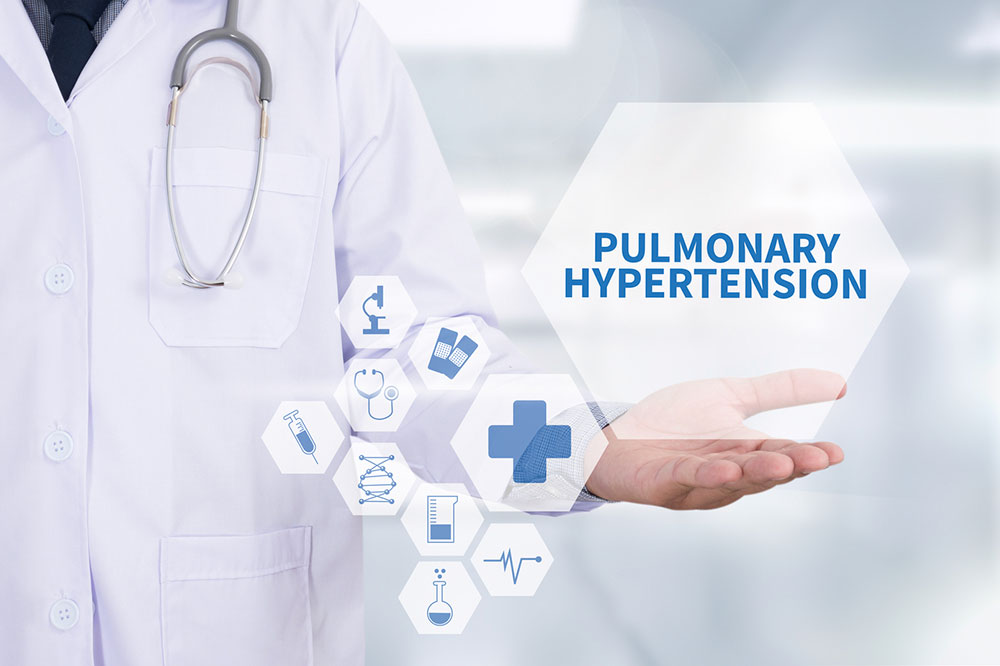Comprehensive Guide to Primary Pulmonary Hypertension: Causes, Symptoms, and Advanced Treatments
This comprehensive article explores primary pulmonary hypertension (PPH), delving into its causes, early symptoms, diagnostic procedures, and current treatment options. It emphasizes the importance of early detection, understanding genetic and environmental factors, and highlights advances in therapies aimed at managing this life-threatening condition. Suitable for patients and healthcare providers, it offers valuable insights into improving quality of life for those affected by PPH through targeted interventions and ongoing research efforts.

Comprehensive Guide to Primary Pulmonary Hypertension: Causes, Symptoms, and Advanced Treatments
Primary pulmonary hypertension (PPH), also known as idiopathic pulmonary arterial hypertension, is a complex and rare condition that primarily affects the arteries within the lungs. It is characterized by the abnormal narrowing and constriction of pulmonary blood vessels, which results in increased blood pressure within the pulmonary circulation. This elevated pressure can burden the heart and, if left untreated, may lead to severe heart failure, impacting overall health and quality of life. Understanding PPH involves exploring its underlying causes, recognizing early symptoms, and exploring current treatment options to manage this challenging disease effectively.
PPH is classified as a type of pulmonary hypertension where the origin is largely unknown, though research suggests that genetic, environmental, and molecular factors may contribute to its development. Since the disease progresses gradually, early diagnosis is often difficult, especially because initial symptoms are subtle and easily mistaken for common respiratory or cardiac issues. Advances in medical research continue to shed light on its underlying mechanisms, but an exact causative agent remains elusive, complicating efforts for early detection and targeted therapy.
Causes and Risk Factors of Primary Pulmonary Hypertension
Despite ongoing research, the precise etiology of PPH remains unknown. However, scientific studies have identified several contributing factors that increase susceptibility. Genetic abnormalities play a significant role, with mutations in genes like BMPR2 (bone morphogenetic protein receptor type 2) being linked to familial forms of the disease. These genetic alterations can cause abnormal constriction of blood vessels and abnormal cell growth within the pulmonary arteries.
Family history is a critical risk factor, indicating a hereditary component in many cases. Environmental exposures to certain substances, such as toxic chemicals, drugs, or infections, may also increase the risk, although these are less clearly defined. The disease causes persistent abnormal pressure buildup in the pulmonary arteries, which hampers normal blood flow from the heart to the lungs and leads to further cardiovascular complications.
Recognizing the Symptoms of Primary Pulmonary Hypertension
Early detection of PPH is notoriously challenging because the initial symptoms are often vague, mild, or mistaken for other health issues. As the disease advances, symptoms become more pronounced and significantly impact daily life. Some of the most common early symptoms include extreme fatigue, dizziness, and breathlessness—particularly during physical activity, which can be mistaken for deconditioning or other less severe respiratory conditions.
Chronic fatigue and sudden dizziness
Shortness of breath, especially during exertion
Persistent dry cough that doesn’t go away
Swelling in the legs, ankles, or abdomen due to fluid retention
Blushed lips, indicating poor oxygenation
Chest pain or angina, often mistaken for heart issues
Rapid heartbeat or palpitations
Signs of low blood oxygen levels, such as cyanosis (bluish discoloration) of lips and fingers)
As the disease worsens, symptoms escalate, causing increased difficulty in breathing and potential heart strain. Less common manifestations include nausea during activity, fainting episodes, coughing up blood, or unexplained weight loss. Because early symptoms are often nonspecific, doctors rely on thorough medical histories, risk assessments, and diagnostic testing to confirm PPH.
Diagnostic Approaches for Pulmonary Hypertension
Diagnosing PPH involves a combination of clinical evaluations and specialized tests aimed at assessing heart and lung health. Key diagnostic procedures include:
Chest X-ray: This imaging test provides an overview of heart size and lung structure, helping to identify abnormalities or signs of pulmonary hypertension.
Electrocardiogram (ECG): Records the electrical activity of the heart, detecting signs of right heart strain or hypertrophy common in pulmonary hypertension.
Echocardiogram: A non-invasive ultrasound that visualizes heart chambers, valves, and estimates pressures within pulmonary arteries, often serving as an initial screening tool.
Pulmonary function tests: Measure lung capacity, airflow, and gas exchange efficiency to rule out other respiratory conditions.
Perfusion scan: Uses radioactive tracers to assess blood flow within the lungs, identifying perfusion deficits indicative of pulmonary hypertension.
Cardiac catheterization: The most definitive test, directly measuring pressure in the pulmonary arteries, evaluating vascular resistance, and detecting any obstructions or abnormalities.
Blood tests: Assess oxygen levels, organ function, and identify underlying causes such as connective tissue diseases or infections.
Management and Treatment Options
Although primary pulmonary hypertension currently has no cure, advances in medical science have significantly improved the quality of life for many patients through tailored treatment regimens. The primary goal of therapy is to reduce symptoms, slow disease progression, and improve overall survival. Treatment strategies include:
Anticoagulation therapy: Blood thinners decrease the risk of blood clot formation, which can worsen pulmonary hypertension and strain the heart.
Diuretics: Help manage fluid retention, reduces swelling, and lessens strain on the right side of the heart.
Vasodilators: Medications such as calcium channel blockers or prostacyclins relax constricted blood vessels, lowering pulmonary artery pressure.
Endothelin receptor antagonists: Decrease the vasoconstrictive effects of endothelin-1, a potent vasoconstrictor molecule involved in PPH.
Phosphodiesterase-5 inhibitors: Improve blood flow in the lungs and reduce pulmonary vascular resistance.
Oxygen therapy: Supplemental oxygen is essential for patients experiencing low blood oxygen levels, easing breathing difficulties.
Advanced therapies and surgical options: In severe cases, lung transplantation or combined heart-lung transplants may be considered as definitive treatments to improve survival prospects.
Despite the complexity of PPH, ongoing clinical trials and emerging therapies continue to offer hope for better management and potential future cures. Patients diagnosed with PPH require multidisciplinary care and regular monitoring to adapt treatment plans to disease progression and response.




